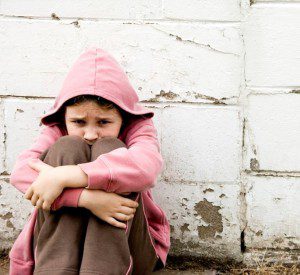Social Exclusion Definition
 Social exclusion refers to keeping an individual or group out of social situations. It typically occurs in the context that the individual or group is believed to possess undesirable characteristics or characteristics deemed unworthy of attention. Acts of social exclusion are observed in humans and other social animals. Researchers agree that social exclusion serves a specific function for those who employ it, and that it is unpleasant and painful for those who are denied inclusion.
Social exclusion refers to keeping an individual or group out of social situations. It typically occurs in the context that the individual or group is believed to possess undesirable characteristics or characteristics deemed unworthy of attention. Acts of social exclusion are observed in humans and other social animals. Researchers agree that social exclusion serves a specific function for those who employ it, and that it is unpleasant and painful for those who are denied inclusion.
Social Exclusion Context, Importance, and Evidence
Researchers suggest four main functions for social exclusion. The first function is as a way of enforcing social rules. Societies operate on rules that apply to various situations, and if members violate these rules, they are often excluded from social activities. Individuals who break criminal laws are often excluded from society. Children who perpetually ignore the rules of a game are subsequently excluded from future games.
Academic Writing, Editing, Proofreading, And Problem Solving Services
Get 10% OFF with 24START discount code
The second function is for the distribution of resources to group members. Most resources are in limited supply; thus, the group must decide which members receive these resources. If members are judged by the majority to be unfit for social exchange, then the majority may decide to exclude those members from social interactions and deny them resources. This often occurs in children, for example, when smaller or less coordinated children are excluded from athletic games. It also occurs on a societal level when laws are enacted that hinder fringe groups from benefiting from governmental programs.
The third function involves group identity, often resulting in justification for discrimination. The need for belonging is an important basic human need; group identity is often a way of fulfilling this need. Group identity categories are formed on biological factors (e.g., race, sex), socially constructed factors (e.g., social class), or personal beliefs and opinions (e.g., religion, politics). These divisions often lead to an “Us versus Them” mentality, serving as a way of solidifying group identity, and keeping dissimilar groups on society’s fringes. Young children tend to socially avoid members of the opposite sex, but play with same-sex members. Exclusion can be the first step toward discrimination, which can lead to large-scale segregation and aggression.
The fourth function is to increase the strength or cohesiveness of the excluding group. Social exclusion is used to reduce vulnerability or weakness in the group. In social animals, the member who is weak or puts the group at risk is excluded, thus strengthening the group. The act of excluding can strengthen the perceived cohesiveness and power of the group. Acts of exclusion provide an immediate sense of power, control, and cohesiveness.
Implications of Social Exclusion
Social exclusion (and related phenomena such as rejection and ostracism) is a powerful and universal social tool. Those who employ it receive some immediate benefits. For those on which it is used, it can sometimes lead them to correct their behaviors so that they can be re-included, but often, it is painful and can lead to depression and, in some cases, aggression. Researchers are actively investigating under what conditions each of these paths are taken, and when social exclusion becomes harmful to the larger group, as well.
Reference:
- Williams, K. D., Forgas, J. P., & von Hippel, W. (Eds.). (2005). The social outcast: Ostracism, social exclusion, rejection, and bullying. New York: Psychology Press.